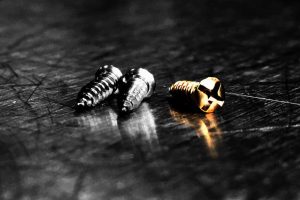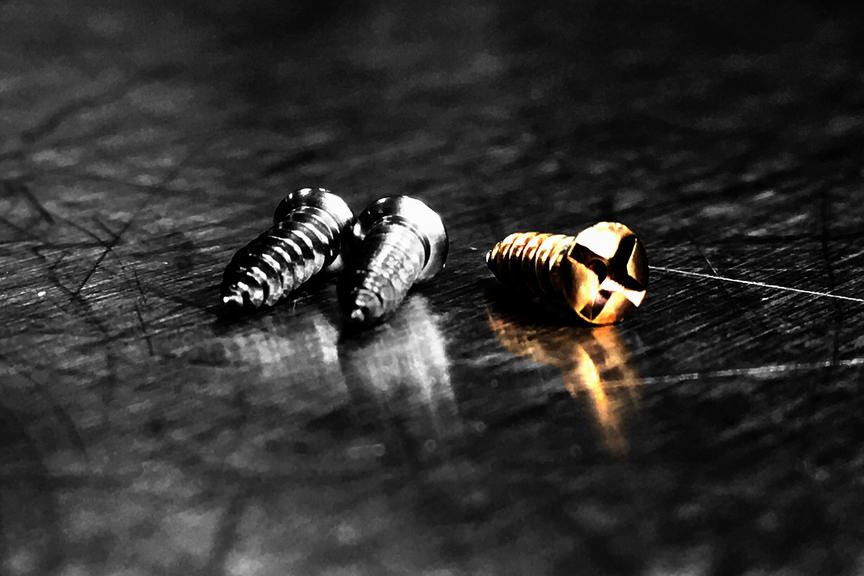Every year, more than one million knee replacement surgeries are done in the United States, and approximately one to two percent of these procedures are followed by infections. These infections are linked to the formation of biofilm–a microbial-derived immobile community with cells that are irreversibly attached to a surface or to each other, forming an impenetrable, dense matrix of sugar and DNA. Acute infections following surgery will usually cause swelling and redness and are often treated with intravenous antibiotics. However, some infections are chronic and persist for months, are challenging to treat, and may result in bone loss and implant failure. It is estimated that treatment of biofilm-associated prosthesis infections costs more than $100,000 for an individual patient.
As a result, orthopedic surgeons and biomedical engineers have looked for improved techniques to reduce infections following artificial knee, joint, and hip surgeries. Antibiotic delivery with implants—via beads or spacers—has been utilized and has shown to reduce infection rates however they have had some limitations. For instance, one antibiotic is supplied at a time, which makes patients more susceptible to antibiotic resistance, and they have poorly controlled release rates. Researchers at Johns Hopkins teamed up to develop an antibiotic-coating device that allowed for multiple antibiotic administration and a well-controlled schedule. The team consisted of Lloyd Miller, associate professor of dermatology and orthopedic surgery at Johns Hopkins School of Medicine and Hai-Quan Mao, professor of materials science and engineering at Johns Hopkins School of Engineering and a member of the Institute of NanoBioTechnology.

Courtesy of ANBerlin through Creative Commons Attribution 2.0
After three years of work, the researchers developed the antibiotic-releasing nanofiber coating—“a thin biodegradable coating with nanofiber mesh embedded in a thin film approved for use in degradable sutures,” which can release multiple antibiotics at preferred rates. A study was conducted on mouse knee joints to test the nanofiber coating. According to Miller, rifampin was utilized as the main antibiotic because of its “excellent anti-biofilm effects.” The research team included three additional antibiotics to reduce the incidence of bacterial resistance. All four drugs were loaded into the nanofiber coating. The coating released rifampin over three to five days and the other antibiotics over fourteen days. Miller’s team deployed “two antibiotics against potential infection while ensuring that rifampin was never present as a single agent.”
The researchers then coated titanium kirschner wires—commonly “used in orthopedic surgeries to fix bone in place after wrist surgeries”—with the antibiotic combination and inserted the wires into knee joints of anesthetized mice. Staphylococcus aureus bacteria— a common causative agent of biofilm-associated infections—was also introduced into the knee joints. S. aureus was designed to give off light so as to allow the research team to track the progression of infection over time.
After fourteen days of drug administration, it was observed that eighty percent of the mice that received titanium wires without antibiotic coating had abundant bacteria in the infected tissue around the knee joint. Mice that received coated wires had no detectable bacteria on the implant surface or surrounding tissue. Miller and his team were very pleased with the results of their study as they were “able to completely eradicate infection with coating.” Other studies with similar approaches only decreased the number of bacteria, but they did not avert infection.
The researchers also stated that the coating could additionally be used for implants like pacemakers and stents. More investigation is required to test the efficacy and limitations of the coating in human patients.
- Ashbaugh AG, Jiang X, Zheng J, et al. Polymeric nanofiber coating with tunable combinatorial antibiotic delivery prevents biofilm-associated infection in vivo. PNAS. 2016;113:E6919-E6928.
- Williams S. Implant coating emits antibiotics on schedule. Futurity Health and Medicine. 27 October 2016. http://www.futurity.org/infections-joint-replacement-1282292-2/
Agnes Ewongwo is a third-year medical student at The University of Arizona College of Medicine – Phoenix. She graduated with a Bachelor of Science in Physiology with minor in Africana studies and biochemistry from The University of Arizona, Tucson. Agnes is captivated by the complex realm of medical technology and passionate about the intersection of research, culture, policy, and humanism in the practice of medicine. She hopes to explore and merge these different areas throughout her medical training and beyond.

